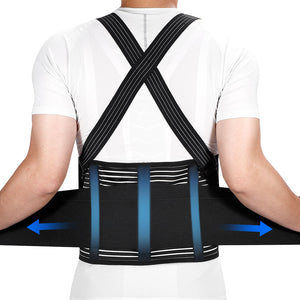How Do I Measure My Waist?

Measuring your waist helps track changes in your body composition insightfully over time. However, achieving precise readings requires following measurement techniques properly each time. Incorrect positioning, improper form, or inconsistent methods can undermine the usefulness of the data. When it comes to the question ‘how do I measure my waist?’, focusing on precision matters a lot. It will clarify trends that can otherwise be obscured by minor errors. Read on to learn how to measure waist size precisely.

How to Measure Waist
The waist is located at the smallest part of the abdomen. It is right above the belly button. Getting an accurate measurement of this area is important. Doing it each week or month will help track changes in your body composition over time. So, when it comes to ‘how do I measure my waist?’, following some key detailed steps is crucial. Here are the steps to follow for a precise waist measurement:
- Roll Up or Take Off the Top
Start by rolling up any shirts or tops that may compress around your abdomen. It is best to remove them entirely. This will help ensure that nothing inhibits access or restricts the area being measured. Don’t forget to loosen belts, remove outerwear layers, or take off bulky items. These typically prevent the tape from making direct contact with your skin. Taking time to fully expose the measurement site leads to clear, unobstructed readings.
- Wrap the Tape Measure Around the Waist
How do you measure a man’s waist? Take the flexible, non-stretching measuring tape and place it horizontally around your exposed waist at the natural waistline location determined previously. Gently wrap the tape so it fits comfortably flush against your skin without constricting tightly. You can have a friend or family member adjust the final inch to avoid inadvertent compressing or loosening upon reading.
- Read the Number on the Tape Measure
How do you measure waist size correctly? Breathing out is key. As you exhale all air from your lungs, hold your breath and have your assistant note the measurement exactly where the tape ends meet. Getting a measurement on an exhaled breath is important. This is because it allows the stomach and abdominal muscles to relax for the most accurate waist size. Inhaling could inflate the number slightly.
- Measure Again
Ideally, take two separate measurements a few seconds apart and record both in your log. Average the two numbers to account for any minor errors. Measuring daily, including mornings before eating and evenings, provides even greater insight into gradual changes. These insights prove useful in the long run. Measurements taken over weeks or months reveal gradual changes that a single weekly check-in might miss.
Common Mistakes When Measuring Waist
Now that you know the right approach to ‘how do I measure my waist?’, it’s important to note that getting an accurate reading of your waistline each week takes discipline. It’s crucial to follow the steps precisely. However, it’s easy to introduce subtle errors. Understanding typical problem areas allows you to double-check and prevent skewed readings that cloud health analysis over time. Carefully avoiding these common mistakes is key to useful health insights:
- Measuring in the Wrong Position
Finding your natural waist is critical but can be easily missed. One mistake is not measuring close enough to your belly button, which is the primary reference point. Inches too high or too low will generate numbers that do not reflect your true waist size. Take care to precisely hit the belly button area.
- Improper Breathing
The depth and pattern of your breaths are important. They can subtly impact measurements if not regulated. Completely emptying your lungs allows stomach muscles to fully relax. This provides an accurate reflection of waist circumference. Mid-exhalation or failing to deflate the lungs entirely before reading the tape can inflate the results slightly.
- Wrapping the Tape Measure Too Tight or Too Loose
Avoiding excess tape pressure or loose wrapping is essential yet tricky to discern. Try different tensions. This will allow you to feel the difference between comfortably flush and skin-compressing tightness. Have a partner subtly slide their finger under the fully wrapped tape. They can help confirm that it’s not restricting blood flow yet still fits securely without gaps.
- Incorrect Body Posture
Even minor shifts like sucking in the abdominals or arching the lower back dynamically modify measurements. To eliminate deceitful changes, square shoulders, back, and hips, and relax the stomach area naturally. Check alignment in a full-length mirror with a relaxed stance. Maintaining a uniform posture each time allows meaningful progress tracking.

Recommended Waist Measurement Frequency
Waist measurement frequency is an important consideration after you learn the answer to ‘how do I measure my waist?’. Maintaining a healthy waist circumference differs between sexes. For men, the ideal is below 40 inches. This reflects a lower risk for obesity-linked conditions. For women, a reading under 35 inches indicates a healthier metabolic profile.
Ideally, checking your progress at least monthly helps maximize health insights. More frequent measurements, such as weekly or bi-weekly, are recommended. They provide closer monitoring of incremental changes. Small shifts of just 1/2 inch upwards or downwards can still impact long-term health outcomes and disease risk factors. As small as a 1-inch reduction in waistline was shown to improve cardiometabolic health over time in studies.
If you are starting a new diet or fitness plan, you should track your waist closely, such as every 7 days. This quick check-in will keep you accountable and able to spot early weight loss or gain. Adjusting nutrition or activity levels promptly avoids potential plateaus. Measuring both in the morning before eating and evening daily supplies a more detailed picture of fluctuations too. Over time, monthly readings allow analysis of overall trends to sustained goals.
How do I measure my waist? The answer to this question is fairly straightforward. Correctly measuring the waist involves following positioning above the belly button. Exhaling fully and applying neither too tight nor too loose tape provides the most accurate reading. Avoiding common errors and measuring routinely helps maximize health insights from tracking waistline changes.
As a sports brace brand with many years of experience helping active lifestyles, Fivali understands the importance of health monitoring. We provide high-quality, reliable products that allow comfortable movement. Our range of product sizes and designs cater to different needs. At Fivali, people come first. That’s why we provide a solid 30-day guarantee on all purchases. In this way, we offer complete peace of mind. Visit our website today to browse our back braces and other offerings and start your fitness journey with confidence. Your health is our priority.
-
Posted in
Brace, Healthy Lifestyle, Recovery













